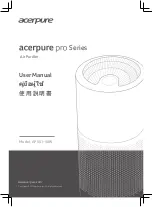
>_]]VbTZR\ <Zb >_^UZdZ_^Vb
4. Purging air and checking gas leakage
WARNING
3. Refrigerant piping work
When piping work is completed, it is necessary to purge the air and check for gas leakage.
1) Do not mix any substance other than the specified refrigerant (R410A) into the refrigeration cycle.
2) When refrigerant gas leaks occur, ventilate the room as soon and as much as possible.
3) R410A, as well as other refrigerants, should always be recovered and never be released directly into the environment.
4) Use a vacuum pump for R410A exclusively. Using the same vacuum pump for different refrigerents may damage the vacuun pump
or the unit.
If using additional refrigerant, perform air purging from the refrigerant pipes and indoor unit using a vacuum pump, then charge additional
refrigerant.
Use a hexagonal wrench (4mm) to operate the stop valve rod.
All refrigerant pipe joints should be tightened with a torque wrench at the specified tightening torque.
Connect projection side of charging hose(Which comes from gauge manifold) to gas stop valve's service port.
Fully open gauge manifold's low-pressure valve(Lo) and completely close its high-pressure valve(Hi).
(High-pressure valve subsequently requires no operation.)
Apply vacuum pumping. Check that the compound pressure gauge reads-0.1MPa(-76cmHg).
Evacuation for at lease 1 hour is recommended.
Close gauge manifold's low-pressure valve(Lo) and stop vacuum pump.
(Leave as is for 4-5 minutes and make sure the coupling meter needie does not go back.
If it does go back, this may indicate the presence of moisture or leaking from connecting parts. After inspecting all the connection and
loosening then retightening thenuts, reqeat steps 2-4. )
Remove covers from liquid stop valve and gas stop valve.
Turn the liquid stop valve's rod 90 degrees counterclockwise with a hexagonal wrench to open valve.
Close it after 5 seconds, and check for gas leakage.
Using soapy water, check for gas leakage from indoor unit's flare and outdoor unit's flare and valve rods.
After the check is complete, wipe all soapy water off.
Disconnect charging hose from gas stop valve's service port, then fully open liquid and gas stop valves.
(Do not attempt to turn valve rodj beyond its stop.)
Tighten valve caps and service port caps for the liquid and gas stop valves with a torque wrench at the specified torques. See "3
Refrigerant piping " on page 6 for details.
2)To prevent gas leakage, apply refrigeration oil on both inner and outer surfaces of the flare. (Use refrigeration oil for R410A)
Torque spanner
Spanner
Pipe joint
Cone nut
10.8-14.7N.m(110-150kgf.cm)
Valve cap tightening torque
Liquid pipe 26.5-32.3N.m(270-330kgf.cm)
Gas pipe 48.1-59.7N.m(490-610kgf.cm)
Service port cap tightening torque
Coat here with refrigeration oil
1
)
. Align the centres of both flares and tighten the flare nuts 3 or 4 turns by hand. Then tighten them fully with the tor wrenches.
Use torque wrenches when tightening the flare nuts to prevent damage to the flare nuts and escaping gas.
Flare nut fightening torque
14.2-17.2N.m(144-175kgf.cm)
32.7-39.9N.m(333-407kgf.cm)
49.5-60.3N.m(505-615kgf.cm)
61.8-75.4N.m(630-769kgf.cm)
Flare nut for 6.35
Flare nut for 9.52
Flare nut for 12.7
Flare nut for 15.88
-
43-
















































